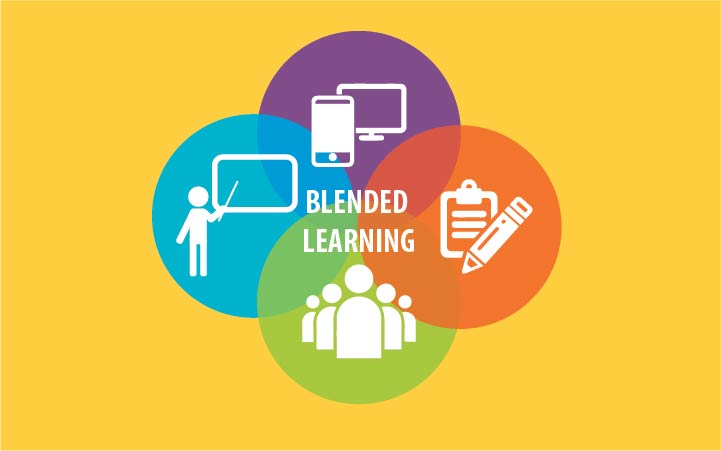We all know that we learn in different ways. The acronym VARK (visual/seeing, aural/hearing, read/write, kinaesthetic/doing) has been around for nearly 30 years.1 But often the best way to learn, and therefore to train, especially in a group situation, is a combination of methods – or a blend.
Blended learning includes various training delivery methodologies to support learner interaction, connection with content, and retention.
Clive Shepherd provided a great definition of blended learning in his blogspot:
“A blended learning solution mixes social contexts for learning (self-study, one-to-one, small group, larger community) with the aim of increasing learning effectiveness, and/or mixes learning media (face-to-face, online, print, etc.) to increase efficiency, in the context of a particular learning requirement, audience characteristics, and practical constraints and opportunities.”2
Models of blended learning include station rotation, flipped classroom and the flex model.3 These consist of a variety of learning experiences that the learner engages in. Usually a mix of:
- Trainer-led instruction (in the classroom and/or in the field/at the worksite)
- Group activities
- Online instruction (eLearning)
- Practical skills development (on the job training, log books, etc).
Each experience contributes to the overall learning process.
Traditional classroom based training is an efficient way to pass on information to a group of people who all need to know the same thing at the same time. It will often include the distribution of written material and include visual cues such as powerpoint presentations and videos.
Group activities allow learners to practice what they have learned in a safe environment and with the support of their peers. Group activities are often used to break up trainer-led instruction with the purpose to reinforce an idea covered in the classroom.
eLearning tends to have a greater emphasis on tools to engage the learner, such as quizzes, games, scenarios and visual prompts. It can be done at the learners own pace and tends to increase information retention.
Practical skills development allows learners to put theory into practice and to gain experience in the workplace, under the watchful eye of a supervisor, mentor or ‘buddy’. It allows for additional instruction and develops problem solving skills, particularly when ‘real life’ throws up different situations to those covered in the theory.
Practical skills development cannot happen in isolation of knowledge development. Knowledge on its own is not competence, until it is successfully (safely and efficiently) applied to practice.
For further information on blended learning solutions, contact Pertrain Pty Ltd on (07) 5445 2233.
Sources:
- VARK Learn Ltd, 2017, The VARL Modalities, http://vark-learn.com/introduction-to-vark/the-vark-modalities/
- Shepherd, C, 2008, So what is blended learning, http://clive-shepherd.blogspot.com.au/2008/07/so-what-is-blended-learning.html
- Clayton Christensen Institute, 2017, Blended Learning Models, http://www.blendedlearning.org/models/#stat

